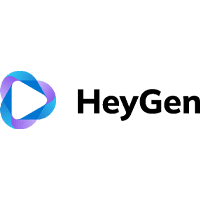AI to the Rescue in Urgent Care!
NHS Revolutionizes Bone Fracture Detection with AI-Powered X-Ray Tools
Last updated:
The NHS in England is adopting AI tools to drastically enhance the detection of bone fractures in X-ray scans. With this significant development, missed fractures, which currently affect 10% of scans in A&E, could become a thing of the past. By being more cost-effective and accurate, this innovation ensures better patient outcomes while preserving the essential role of radiologists and radiographers.
Introduction to AI in NHS Bone Fracture Detection
Learn to use AI like a Pro
Get the latest AI workflows to boost your productivity and business performance, delivered weekly by expert consultants. Enjoy step-by-step guides, weekly Q&A sessions, and full access to our AI workflow archive.














Current Challenges in X-ray Fracture Diagnosis
Learn to use AI like a Pro
Get the latest AI workflows to boost your productivity and business performance, delivered weekly by expert consultants. Enjoy step-by-step guides, weekly Q&A sessions, and full access to our AI workflow archive.














Benefits of AI Tools in Reducing Missed Fractures
Learn to use AI like a Pro
Get the latest AI workflows to boost your productivity and business performance, delivered weekly by expert consultants. Enjoy step-by-step guides, weekly Q&A sessions, and full access to our AI workflow archive.














Overview of NICE-Approved AI Platforms
Learn to use AI like a Pro
Get the latest AI workflows to boost your productivity and business performance, delivered weekly by expert consultants. Enjoy step-by-step guides, weekly Q&A sessions, and full access to our AI workflow archive.














Cost and Economic Implications of AI Integration
Learn to use AI like a Pro
Get the latest AI workflows to boost your productivity and business performance, delivered weekly by expert consultants. Enjoy step-by-step guides, weekly Q&A sessions, and full access to our AI workflow archive.














AI's Role in Enhancing Radiology Expertise
Ethical Considerations and Professional Oversight
Learn to use AI like a Pro
Get the latest AI workflows to boost your productivity and business performance, delivered weekly by expert consultants. Enjoy step-by-step guides, weekly Q&A sessions, and full access to our AI workflow archive.














Public and Professional Reception to AI Implementation
Learn to use AI like a Pro
Get the latest AI workflows to boost your productivity and business performance, delivered weekly by expert consultants. Enjoy step-by-step guides, weekly Q&A sessions, and full access to our AI workflow archive.













